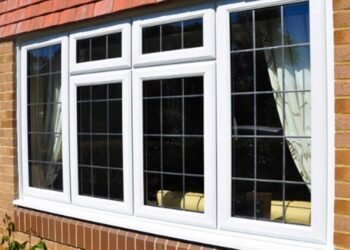When it comes to maintaining or enhancing your deck, selecting the right time of year for repair or installation can significantly impact the outcome. Different seasons present unique conditions that can either facilitate or hinder the process, making it crucial to choose the optimal time for your project. Whether you’re planning routine upkeep or a full deck upgrade, Americana Iron Works Custom Deck Services recommends aligning your project timeline with seasonal advantages to ensure top-tier results. We will explore the key factors influencing the timing of deck repair and installation, including weather conditions, material considerations, and the impact on costs and scheduling.
Weather Conditions and Deck Repair
The weather plays a pivotal role in determining the ideal time for deck repair. Generally, the best time to undertake this project is spring or fall. During these seasons, temperatures are moderate, which benefits many types of decking materials. For instance, wood decks are susceptible to extreme temperatures. Excessive heat can cause the wood to expand and become brittle, while cold temperatures can make the wood contract and become more prone to cracking. Moderate temperatures ensure the deck materials adhere properly and have a stable foundation for repairs or installation.
In addition to temperature, humidity levels also affect the repair process. High humidity can prolong drying times for paint and sealants, which might lead to uneven finishes or potential damage. On the other hand, extremely dry conditions can cause materials like wood to dry out too quickly, leading to potential warping or cracking. Spring and fall typically offer balanced humidity levels, creating an optimal environment for deck repairs.
Material Considerations
Different materials used in deck construction and repair react differently to seasonal changes. Wood, for instance, is highly susceptible to moisture. Rain and snow can damage untreated lumber, leading to issues such as rot and mildew. Therefore, scheduling deck repairs or installation during drier seasons reduces the risk of moisture-related problems. Composite and synthetic decking materials are less sensitive to weather fluctuations but benefit from moderate temperatures during installation to ensure proper fitting and adhesion.
Moreover, certain materials may have specific requirements or recommendations for installation. For example, some decking materials may require acclimation to the local climate before installation to avoid issues like expansion or contraction. Planning your project around these requirements and considering the material’s behavior in various weather conditions can help ensure a successful outcome.
Impact on Costs and Scheduling
The timing of your deck repair or installation can also impact costs and scheduling. Generally, contractors experience peak demand during the summer months, which may lead to higher prices and extended wait times. Scheduling your project during the off-peak seasons, such as late fall or early spring, might result in lower costs and greater availability of contractors. During these times, you also have more flexibility in scheduling your project, which is advantageous if you have a tight timeframe.
Additionally, choosing a less busy time for your deck project can allow you to work with contractors who can dedicate more time and attention to your project. This can result in a higher quality of work and a more personalized service experience. Planning and scheduling your deck repair or installation during the off-peak seasons allows you to take advantage of these potential benefits and avoid the rush and high costs associated with peak periods.
Preparing for Seasonal Challenges
Each season presents its own set of challenges that can affect deck repair and installation. In summer, for example, high temperatures and intense sunlight can impact the curing times of certain materials, such as adhesives and sealants. It’s essential to follow the manufacturer’s recommendations and possibly adjust your working hours to avoid working during the day’s peak heat. Conversely, winter weather can introduce challenges like frost and snow, delaying or complicating the repair process. Preparing for these seasonal challenges by consulting with your contractor and making necessary adjustments can help ensure your project proceeds smoothly.
Long-Term Benefits of Seasonal Timing
Choosing the right time of year for your deck repair or installation affects the immediate quality of the work. It has long-term benefits for the durability and maintenance of your deck. Performing repairs or installation during optimal conditions ensures that materials are correctly set and performed as intended over time. For example, completing a deck installation during mild weather can reduce the likelihood of warping or cracking arising from temperature extremes. Also, adequately timed maintenance can help prevent future problems, such as water damage or mold growth, if repairs are done under adverse conditions. By investing in the timing of your deck project, you contribute to its longevity and overall performance, ensuring that your deck remains a valuable and attractive feature of your home for years to come.
Choosing the right time of year for professional deck repair or installation by https://anchoredconstructiontn.com/deck-builders/ involves carefully considering various factors, including weather conditions, material requirements, and potential impacts on costs and scheduling. Planning your project during favorable seasons, such as spring or fall, ensures that your deck repairs are completed efficiently and effectively. Additionally, considering the unique challenges of each season and preparing accordingly can contribute to a successful project outcome. Selecting the optimal time for your deck project can enhance the quality of the work and provide long-term benefits for your outdoor space.












